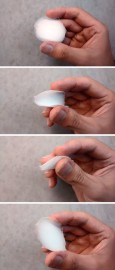It’s been a big couple of months for materials science funding in the United States. TMR+ rounds up the key announcements.
Flexible hybrid electronics
AUG 2015 – the US Department of Defense (US DOD) has awarded $75 million to the Flextech Alliance to establish and manage a Flexible Hybrid Electronics Manufacturing Innovation Institute (FHEMII).
The Flextech Alliance has created a map (JPEG format) of its 150+ partner network, which clusters around nano-bio; flex substrates; design, modelling and testing; equipment and materials; deposition and printing; CMOS thinning; packaging; and standards.
According to the announcement, the funding, which runs for five years, will be matched by more than $96 million in cost sharing from non-federal sources, including the City of San Jose, private companies, universities, several U.S. states, and not-for-profit organizations.
Beyond defence applications, other markets for flexible hybrid electronics include automotive, communications, consumer electronics, medical devices, health care, transportation and logistics, and agriculture.
Nanotechnology
SEP 2015 – the US National Science Foundation (NSF) is providing $81 million over five years to support 16 sites and a coordinating office as part of a new National Nanotechnology Coordinated Infrastructure (NNCI).
The NNCI framework is the successor to the National Nanotechnology Infrastructure Network (NNIN), which – as the program synopsis outlines – provided researchers from academia, small and large companies, and government with open access to university user facilities with leading-edge fabrication and characterization tools, instrumentation, and expertise within all disciplines of nanoscale science, engineering, and technology.
Advanced materials translation
SEP 2015 – Designing Materials to Revolutionize and Engineer our Future (DMREF) is the NSF’s ‘primary program’ for participating in the Materials Genome Initiative – a multi-agency initiative to accelerate advanced materials discovery and deployment by exploiting advances in computational techniques, and making more effective use of standards, and enhanced data management.
Recognizing the multi-disciplinary nature of the task, DMREF reaches across various NSF directorates including Mathematical and Physical Sciences; Engineering; and Computer and Information Science and Engineering.
DMREF funding consists of 20 – 25 grants of between $750,000 and $1,600,000 to develop, for example, new data analytic tools and statistical algorithms; advanced simulations of material properties in conjunction with new device functionality; advances in predictive modeling that leverage machine learning and data mining; and new collaborative capabilities for managing large, complex, heterogeneous and distributed data.
Related stories on TMR+
– Materials by design: NIST announces consortium to speed up time from discovery to first commercial use
– Show report: IDTechEx Printed Electronics Europe 2015 (Berlin)

